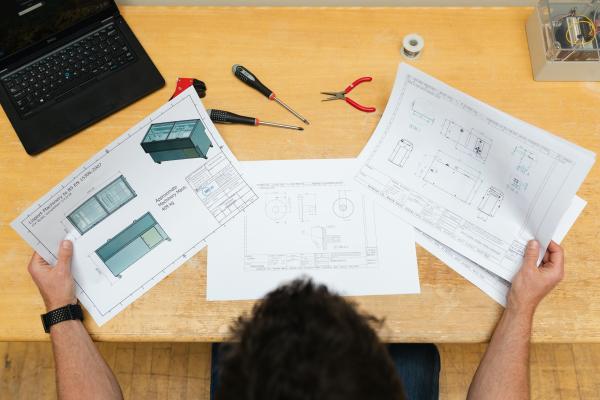Why is the Engineering Design Process Important?
The engineering design process is of utmost importance as it provides a systematic and structured approach to problem-solving and innovation. Here are several key reasons why the engineering design process is crucial:
- Problem Identification and Definition: The design process helps engineers identify and define the problem or need that requires a solution. Through careful analysis and understanding of the problem's requirements, constraints, and objectives, engineers can develop a clear understanding of what needs to be achieved.
- Creative Solution Generation: The design process encourages engineers to explore multiple solutions and generate creative ideas. It promotes divergent thinking, allowing for the exploration of different concepts, approaches, and technologies to address the identified problem. This phase fosters innovation and encourages engineers to think outside the box.
- Evaluation and Analysis: The design process involves the systematic evaluation and analysis of potential solutions. Engineers assess the feasibility, functionality, and practicality of each option by considering technical, economic, social, and environmental factors. This evaluation helps identify the most suitable solution and enables engineers to make informed decisions.
- Iterative Refinement: The design process is iterative, allowing engineers to refine and improve their solutions. Through testing, prototyping, and feedback, engineers can identify shortcomings, address design flaws, and optimize their solutions for better performance, efficiency, and reliability. This iterative nature ensures that the final design meets the desired criteria and specifications.
- Documentation and Communication: The engineering design process emphasizes clear documentation and communication. Engineers create detailed plans, drawings, specifications, and technical documentation to communicate their designs to stakeholders, clients, and other members of the project team. This documentation serves as a reference throughout the design, construction, and maintenance phases, ensuring consistent understanding and effective communication.
- Risk Management and Safety: The design process enables engineers to identify potential risks and safety hazards associated with their designs. By conducting risk assessments, performing safety analyses, and adhering to industry regulations and standards, engineers can mitigate risks and ensure the safety of the end-users and the public.
- Cost and Resource Optimization: Through the design process, engineers can optimize designs for cost-effectiveness and efficient resource utilization. By considering factors such as material selection, manufacturing processes, energy efficiency, and maintenance requirements, engineers can minimize costs, reduce waste, and improve the sustainability of their designs.
What is the most important part of the engineering design process?
While every step of the engineering design process is important, it is challenging to identify a single "most important" part. However, the problem identification and definition stage can be considered critical. Here's why:
- Setting the Foundation:
The problem identification and definition stage lays the foundation for the entire design process. It involves understanding the problem or need, identifying project goals, and defining the scope and constraints. Without a clear understanding of the problem, it is impossible to develop an effective solution.
- Alignment with Stakeholder Needs:
This stage ensures that the design process is aligned with the needs and expectations of the stakeholders, including clients, end-users, and regulatory bodies. It involves engaging with stakeholders, gathering requirements, and clarifying project objectives. Understanding stakeholder needs is essential for developing a solution that satisfies their requirements and provides value.
- Guiding Decision-Making:
The problem identification and definition stage helps guide subsequent decision-making throughout the design process. It provides a framework for evaluating alternative solutions, determining design criteria, and prioritizing design requirements. By having a clear problem definition, engineers can make informed decisions based on established objectives and constraints.
- Scope Management:
Clearly defining the problem helps in managing the scope of the project. It helps prevent scope creep, where the project expands beyond the original objectives, leading to schedule delays and budget overruns. By setting clear boundaries, engineers can focus their efforts on addressing the specific problem at hand.
- Innovation and Creativity:
The problem identification and definition stage fosters innovation and creative thinking. It challenges engineers to explore new ideas, approaches, and technologies to solve the identified problem. By encouraging creative solution generation at the early stage, engineers can develop innovative designs that meet stakeholder needs effectively.
While the problem identification and definition stage is crucial, it is important to note that all stages of the engineering design process are interconnected and equally important. Each step builds upon the previous one, and successful design outcomes require a comprehensive approach throughout the entire process.
In summary, the engineering design process is crucial as it guides engineers through problem identification, creative solution generation, evaluation, refinement, documentation, risk management, and optimization. By following a structured process, engineers can develop innovative, safe, and cost-effective solutions that meet the needs of the project and deliver value to society.

